Rambla Modolell
The Rambla Modolell Viladecans urbanization project is a City Council initiative. It aims to transform a historic promenade into a civic, cultural, and community axis. The intervention covers 28,175 m² in two phases. It builds on a process launched in 2016 with technical studies and citizen input. It also aligns with the Municipal Action Plan 2020–2023 and the Viladecans 2030 Agenda.
The scope includes the entire Rambla Modolell and nearby streets in Torre-roja – Campreciós, in north Viladecans. The area began as a streambed. Later, it became a mid-20th-century promenade. However, shifts in mobility and daily use reduced its appeal. As a result, the space became fragmented, economic activity slowed, and public use declined.
Five Core Strategies
1) Connect (longitudinal and transverse).
The project stitches the rambla to its surroundings. It extends the axis north and south. In addition, it upgrades cross streets as high-quality public spaces.
2) Calm traffic and put people first.
The design reduces car flow and prioritizes walking. It introduces a single-level platform with inverted priority. Therefore, residents and services keep access while pedestrian zones grow safer and larger.
3) Create distinctive places.
A sequence of emblematic spaces defines a clear identity: Era Square, Escenario Square (integrating the Àngela Roca I School courtyard), the forecourt of Torre del Baró, and the Ateneu Pablo Picasso surroundings. Meanwhile, the central section—lined by a double row of tipuana trees—remains the main civic area, especially for hospitality uses.
4) Naturalise for comfort and biodiversity.
A simple ecological matrix improves shade and climate. It adds adapted species such as tipuanas, ginkgos, and gleditsias. Moreover, planting supports urban biodiversity.
5) Go smart.
ICT infrastructure prepares the public space for sensors and automated services. Specifically, it enables data-driven operations and future smart-city actions.
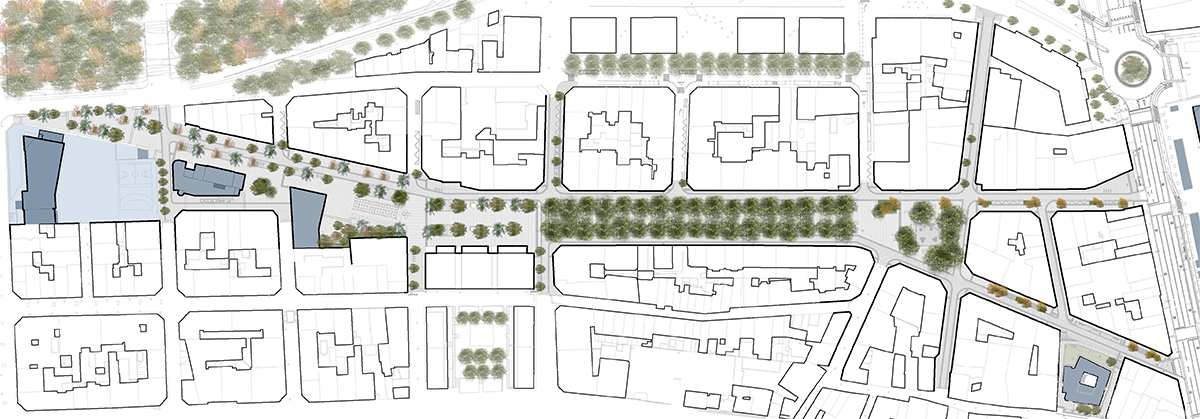
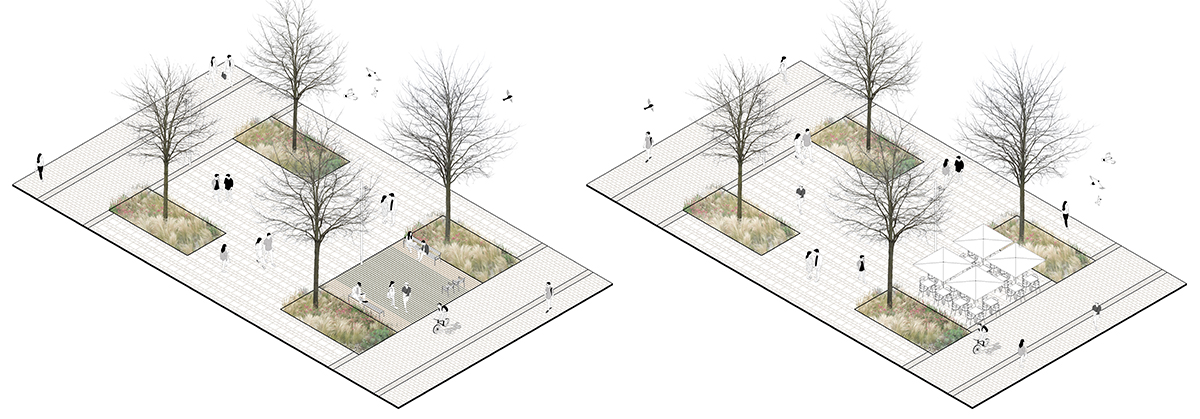
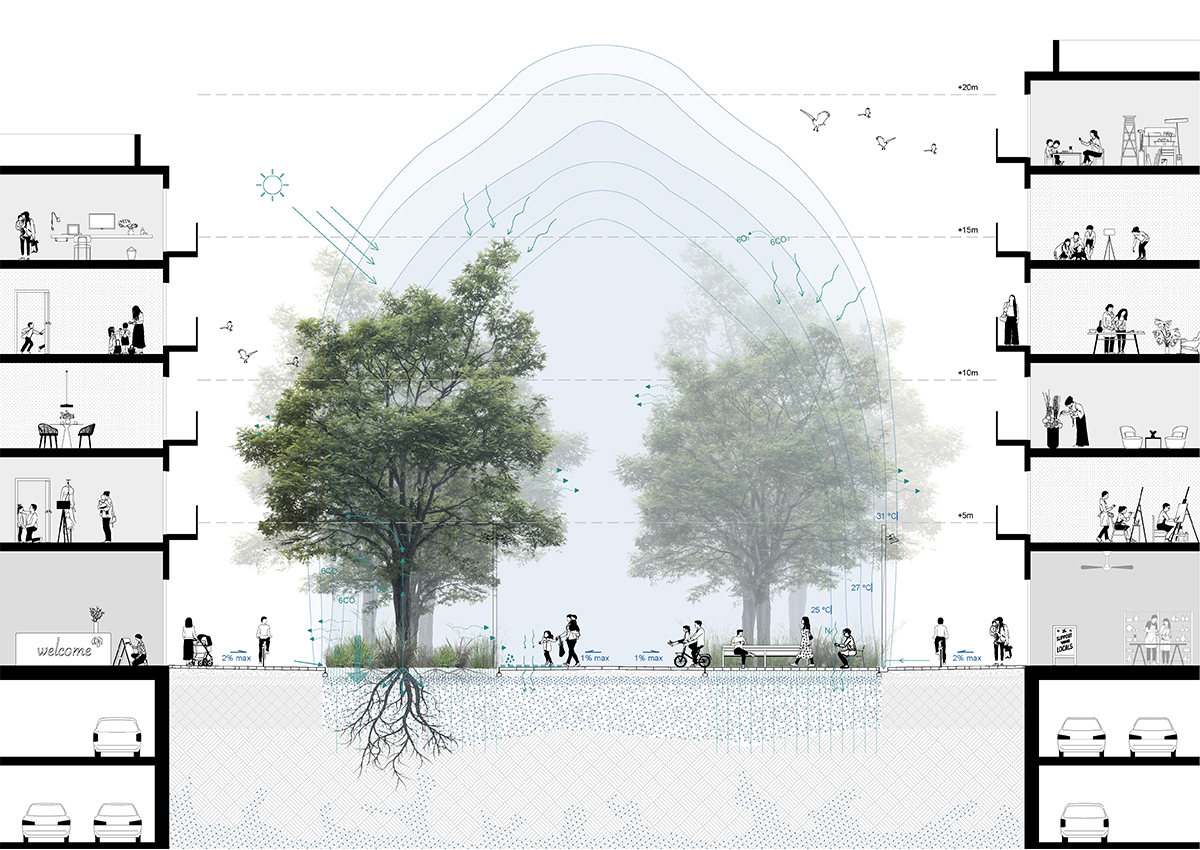
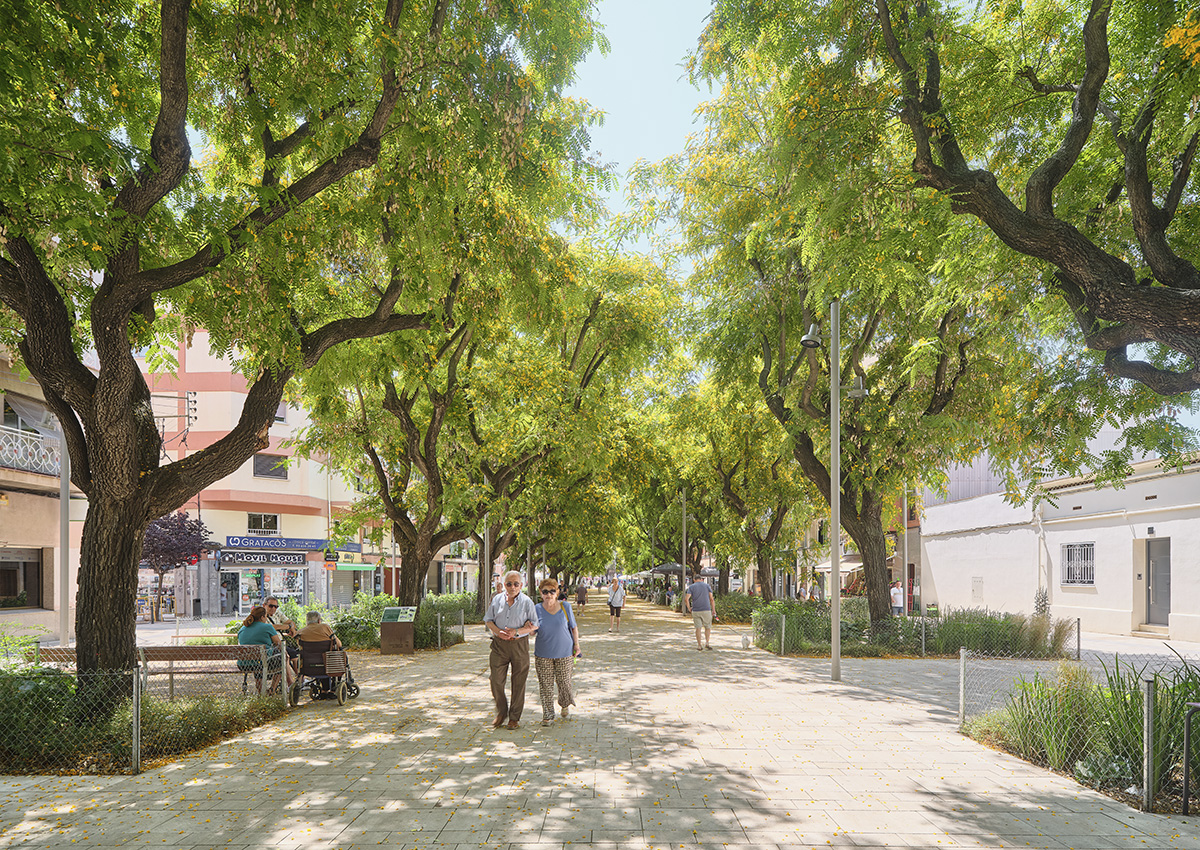

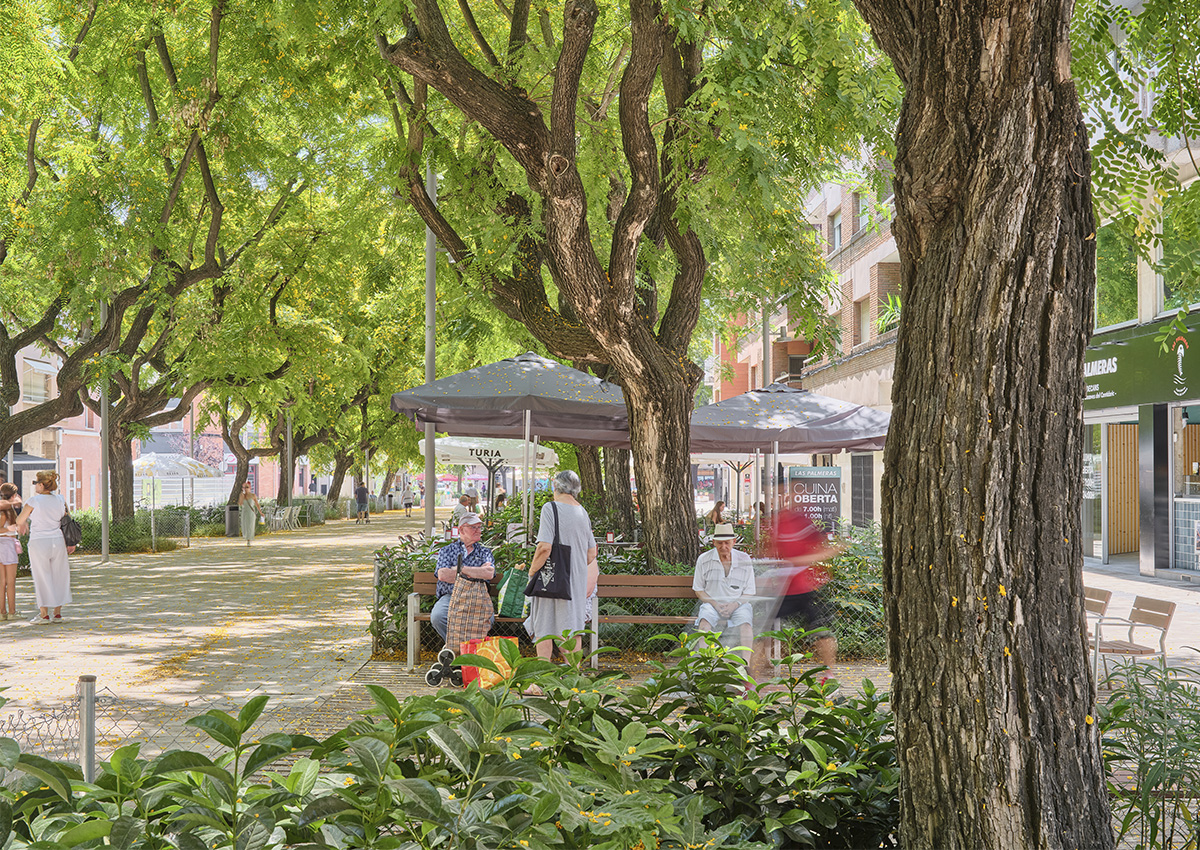

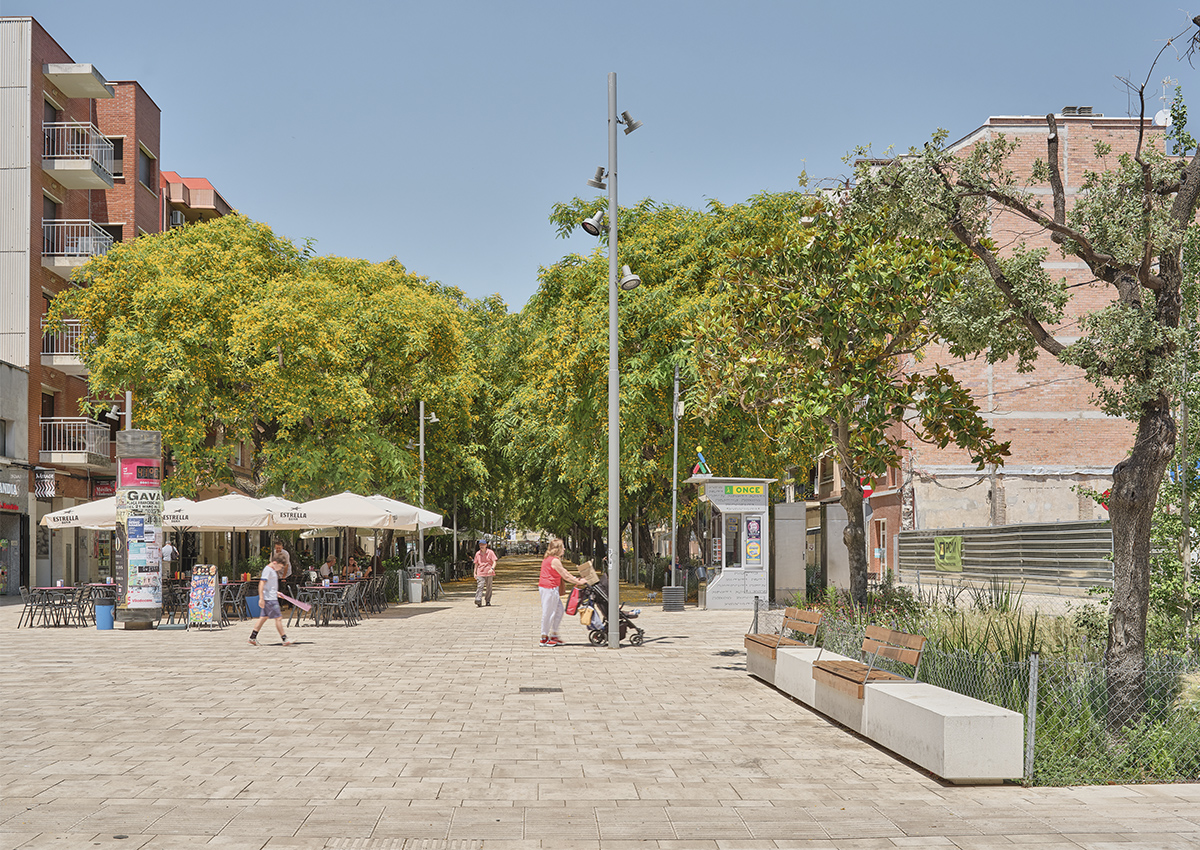
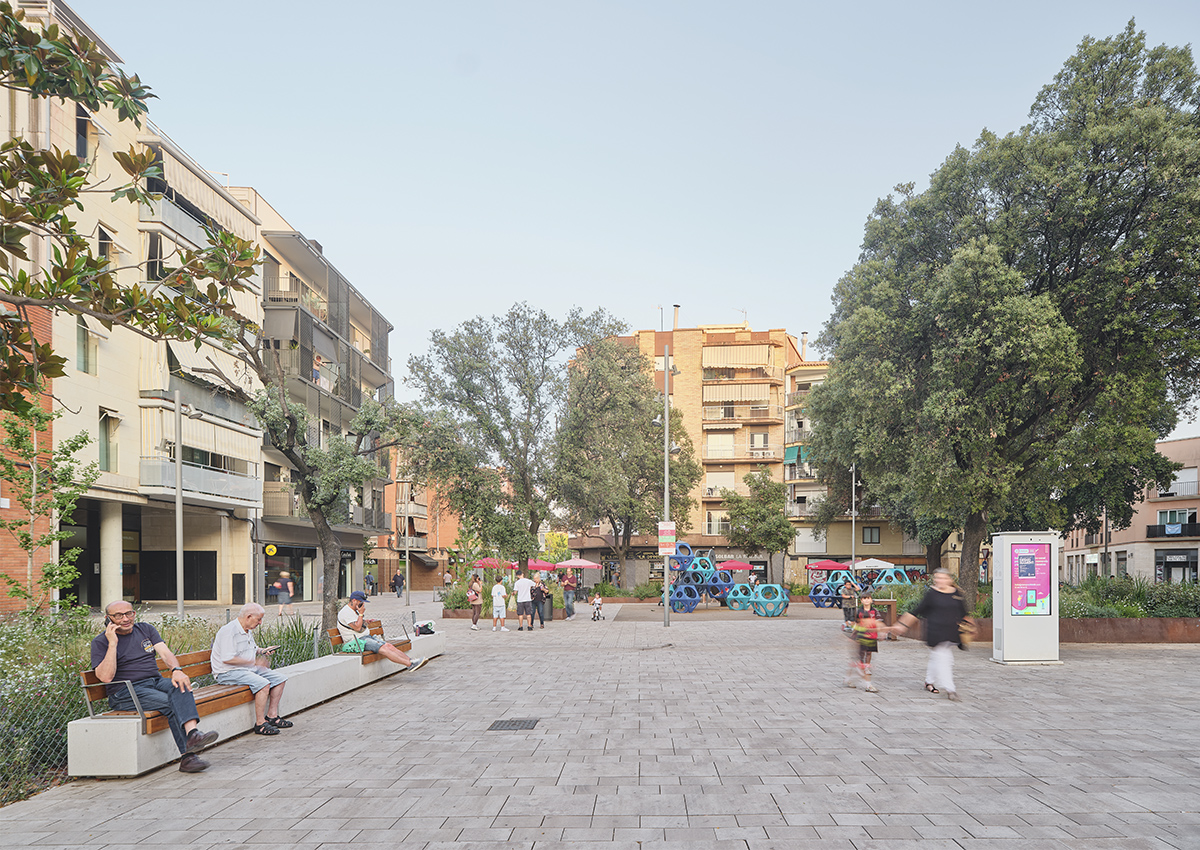
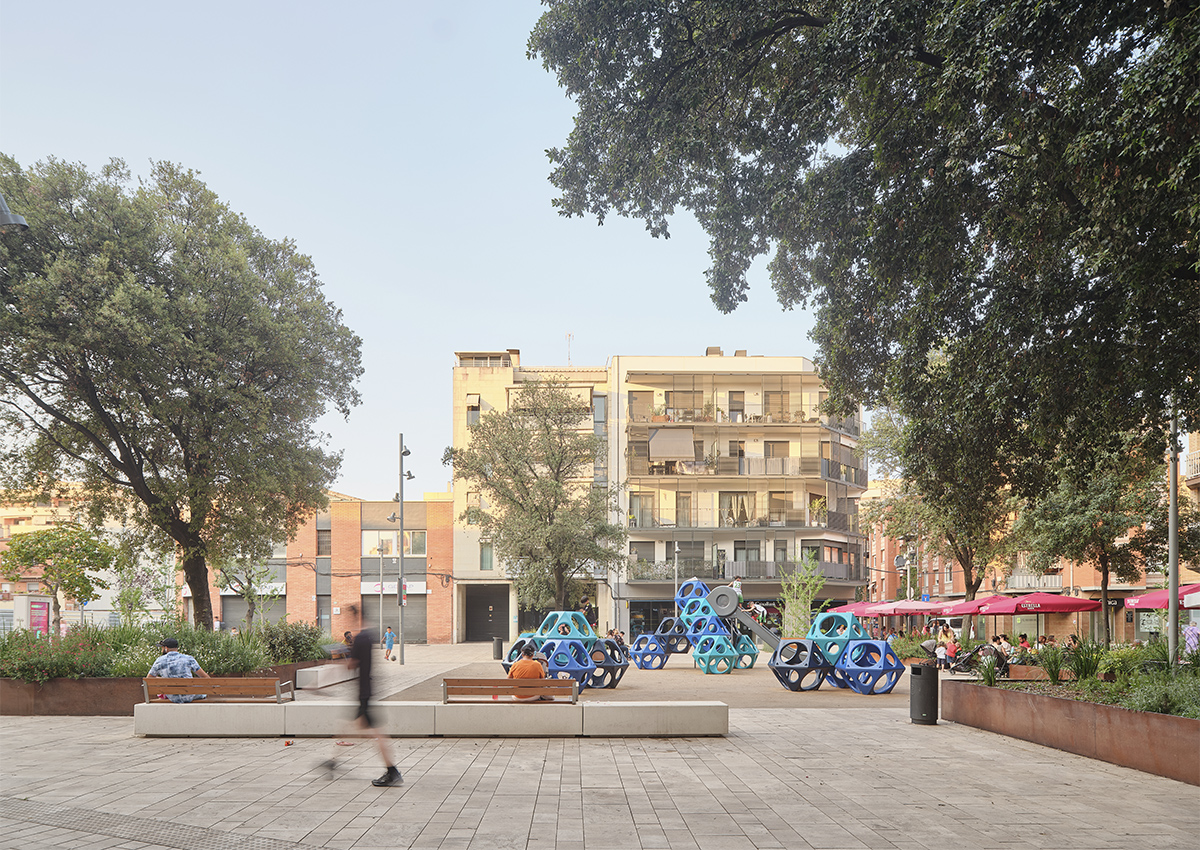
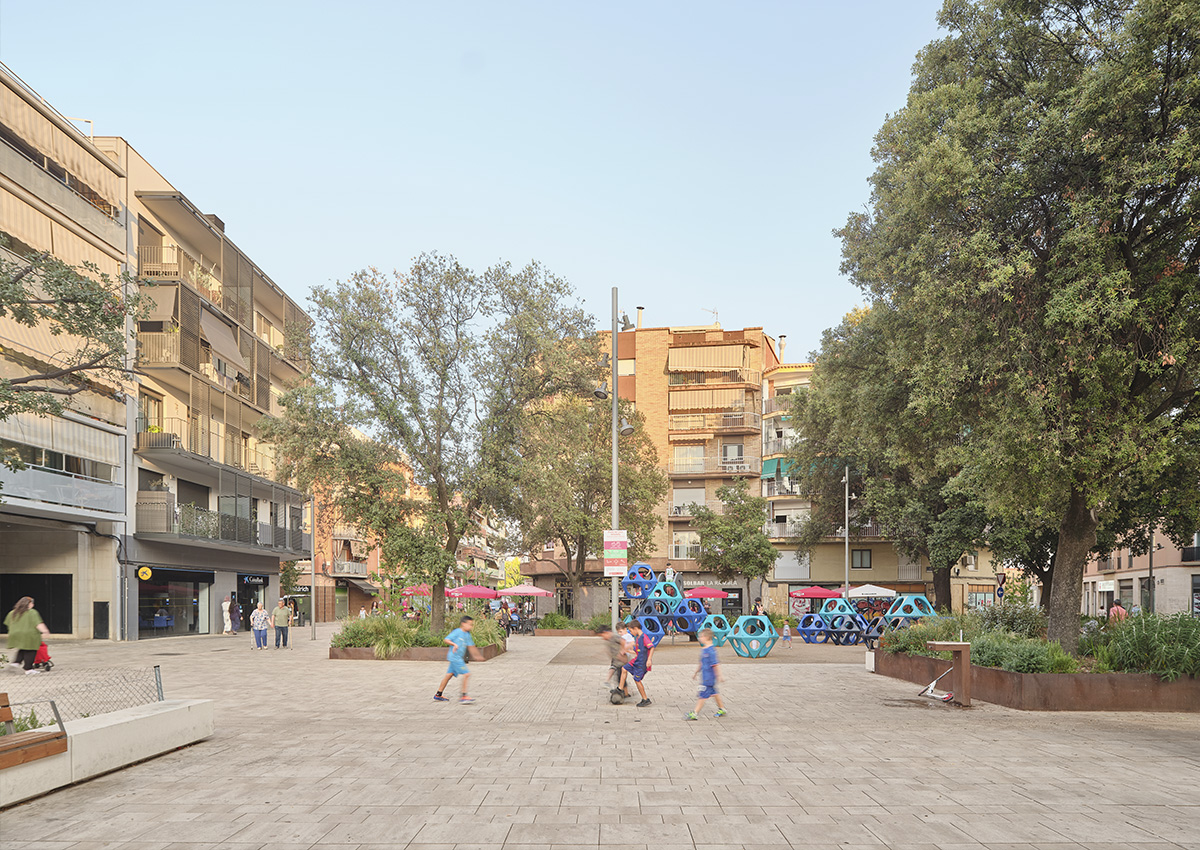
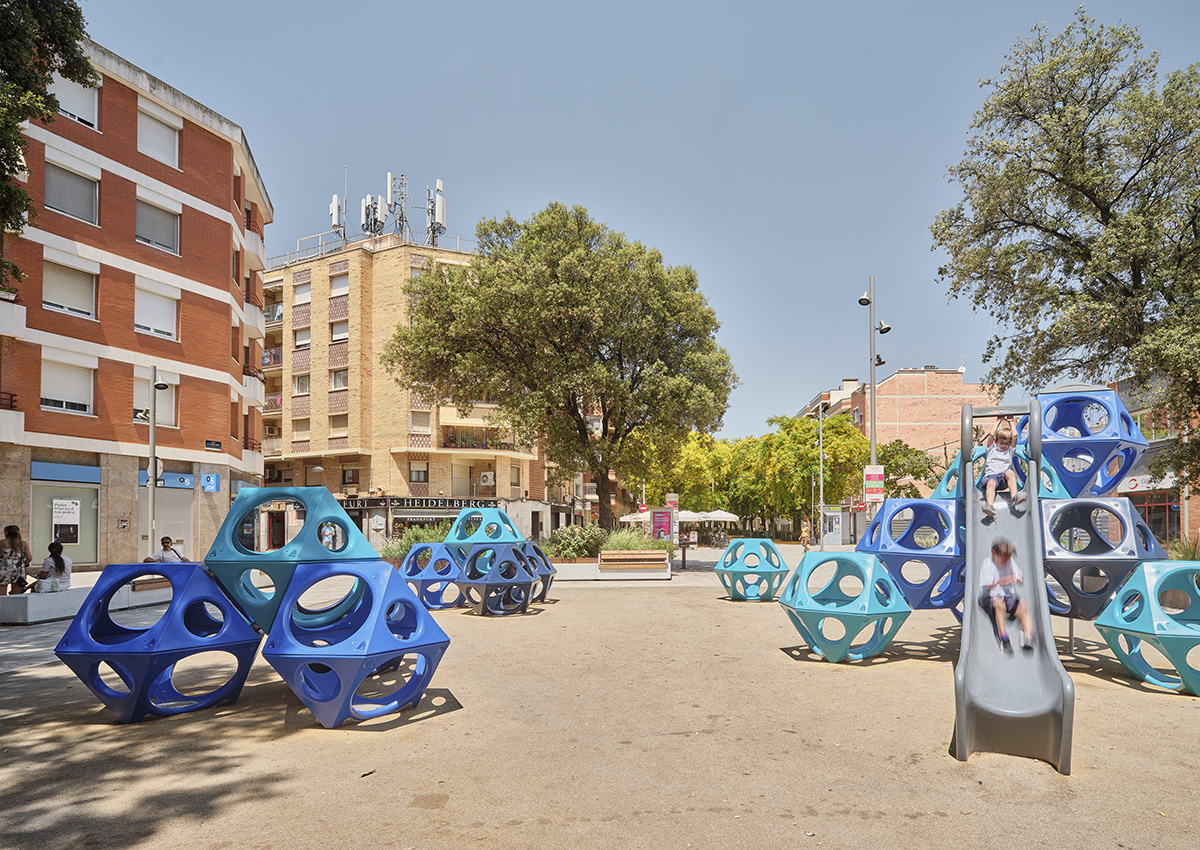
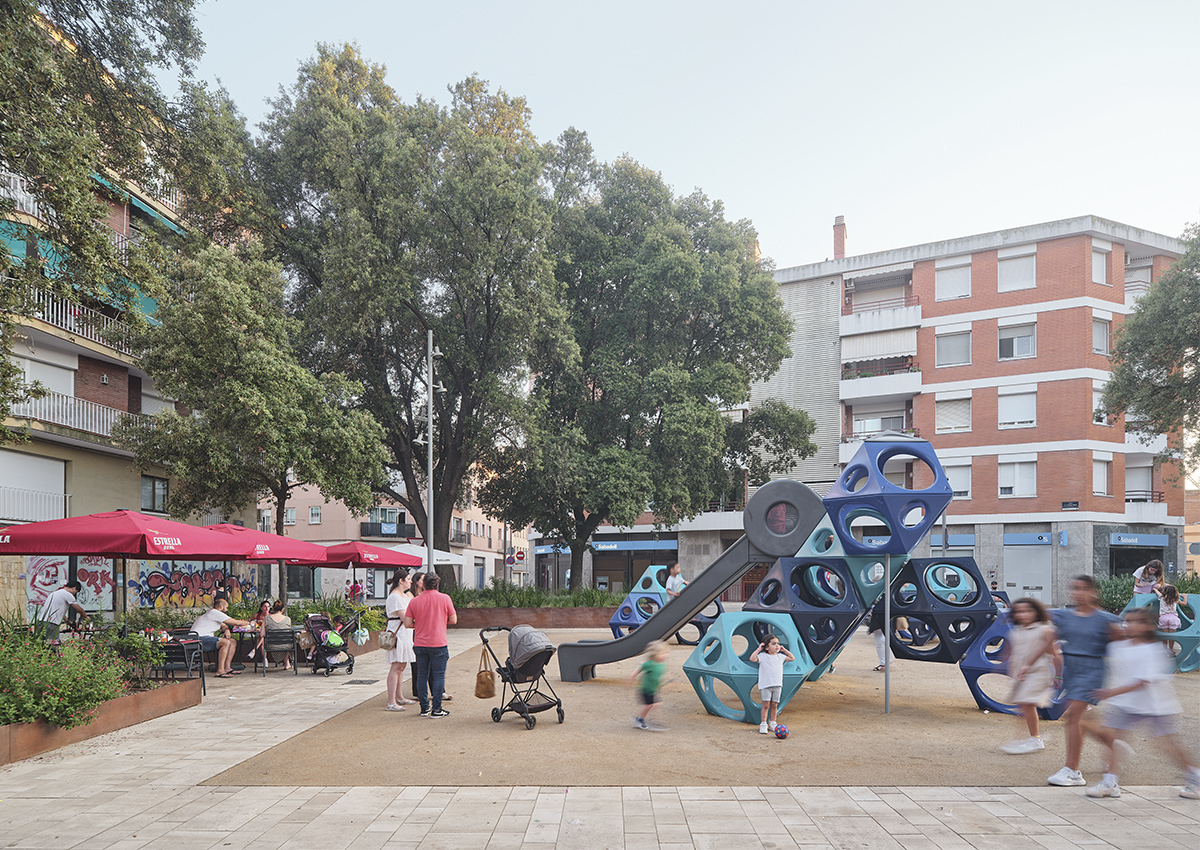


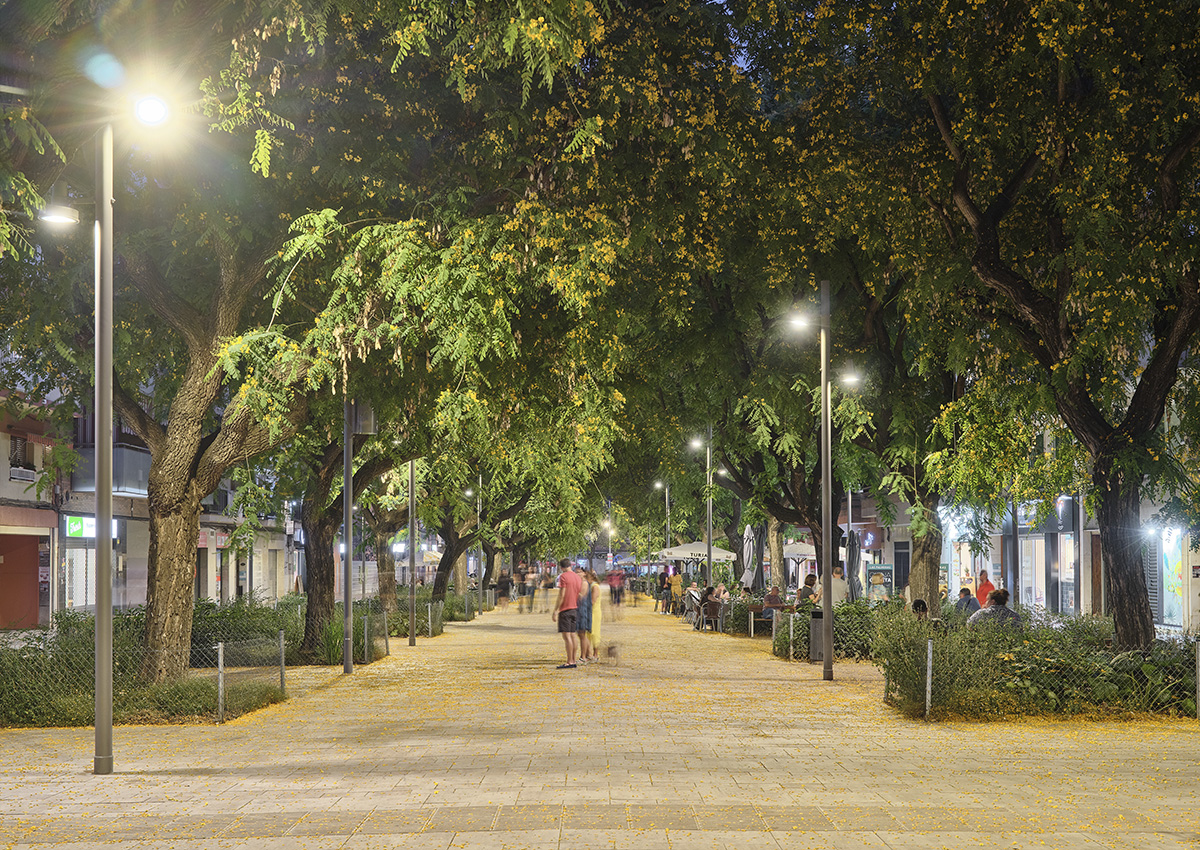

The Rambla Modolell Viladecans urbanization project is a City Council initiative. It aims to transform a historic promenade into a civic, cultural, and community axis. The intervention covers 28,175 m² in two phases. It builds on a process launched in 2016 with technical studies and citizen input. It also aligns with the Municipal Action Plan 2020–2023 and the Viladecans 2030 Agenda.
The scope includes the entire Rambla Modolell and nearby streets in Torre-roja – Campreciós, in north Viladecans. The area began as a streambed. Later, it became a mid-20th-century promenade. However, shifts in mobility and daily use reduced its appeal. As a result, the space became fragmented, economic activity slowed, and public use declined.
Five Core Strategies
1) Connect (longitudinal and transverse).
The project stitches the rambla to its surroundings. It extends the axis north and south. In addition, it upgrades cross streets as high-quality public spaces.
2) Calm traffic and put people first.
The design reduces car flow and prioritizes walking. It introduces a single-level platform with inverted priority. Therefore, residents and services keep access while pedestrian zones grow safer and larger.
3) Create distinctive places.
A sequence of emblematic spaces defines a clear identity: Era Square, Escenario Square (integrating the Àngela Roca I School courtyard), the forecourt of Torre del Baró, and the Ateneu Pablo Picasso surroundings. Meanwhile, the central section—lined by a double row of tipuana trees—remains the main civic area, especially for hospitality uses.
4) Naturalise for comfort and biodiversity.
A simple ecological matrix improves shade and climate. It adds adapted species such as tipuanas, ginkgos, and gleditsias. Moreover, planting supports urban biodiversity.
5) Go smart.
ICT infrastructure prepares the public space for sensors and automated services. Specifically, it enables data-driven operations and future smart-city actions.